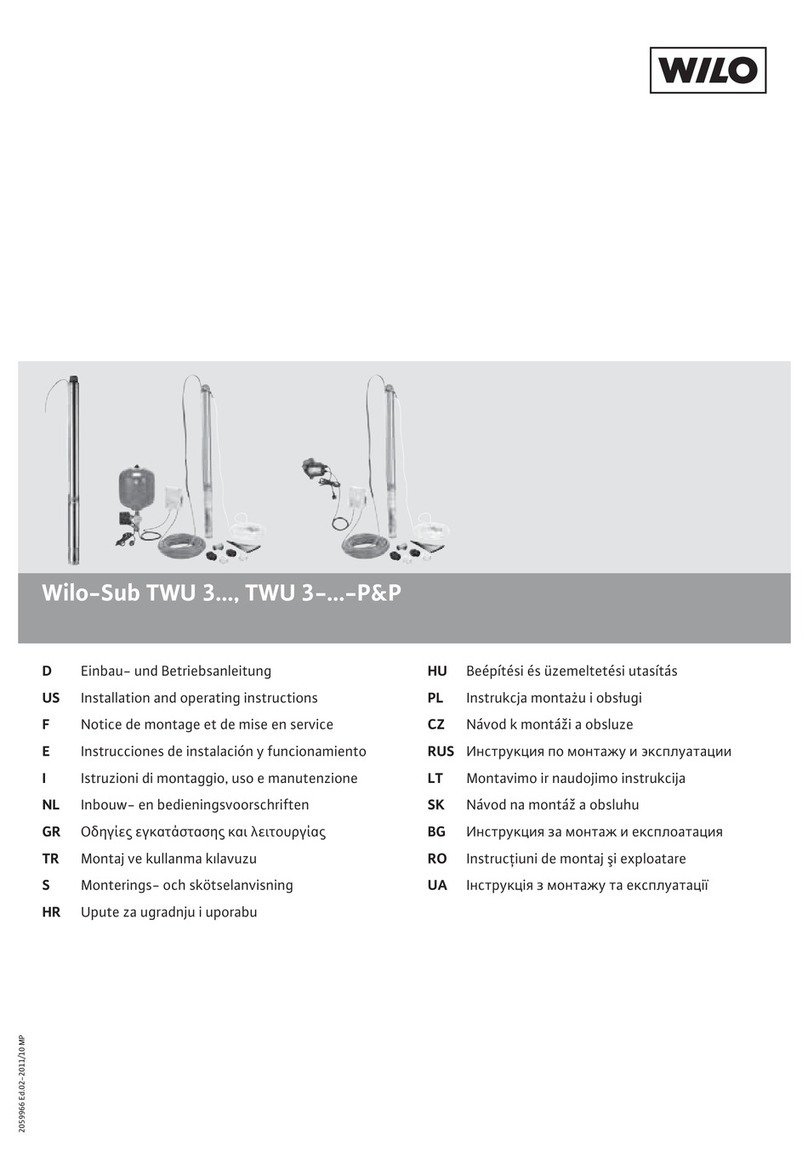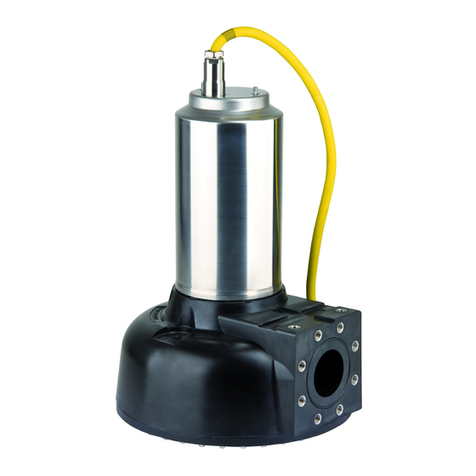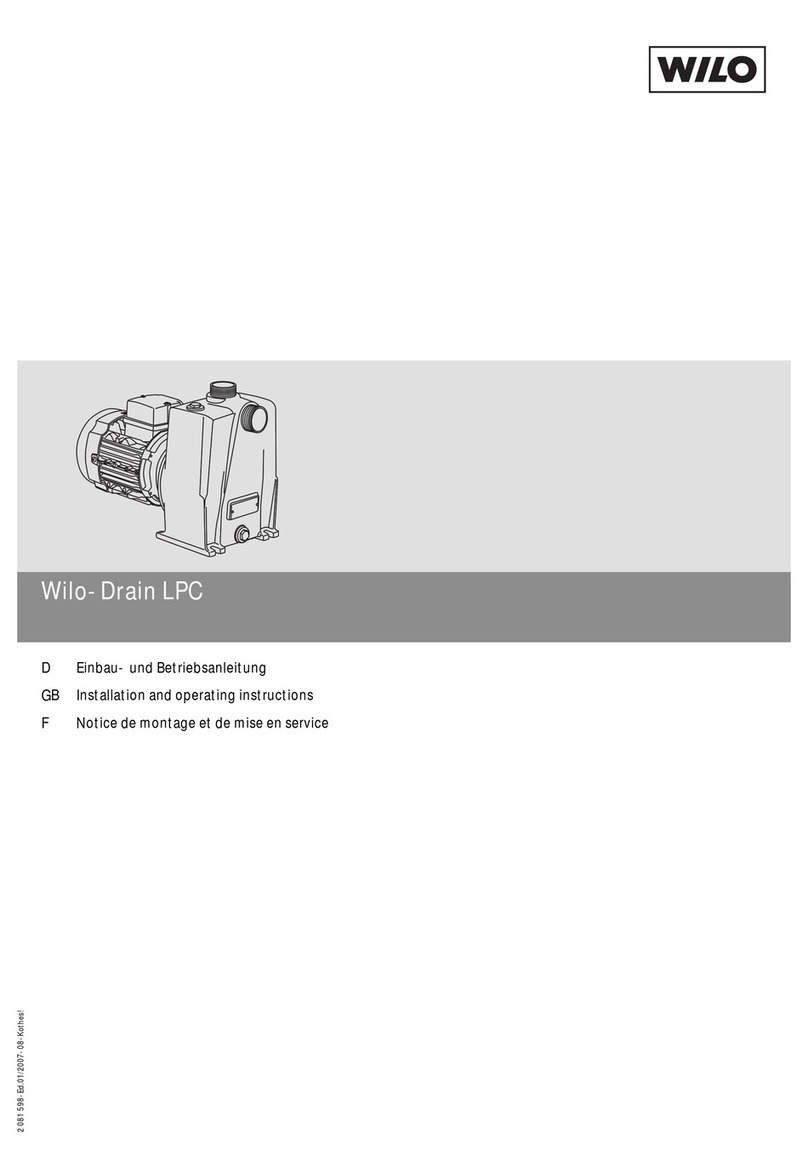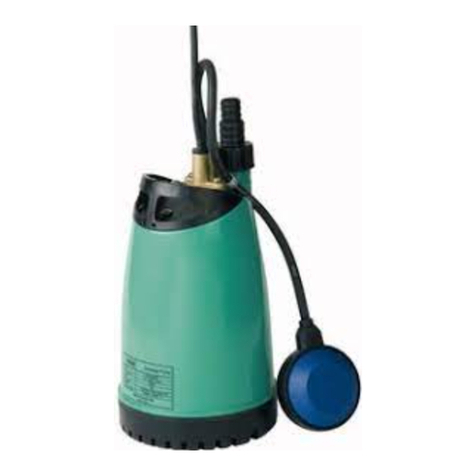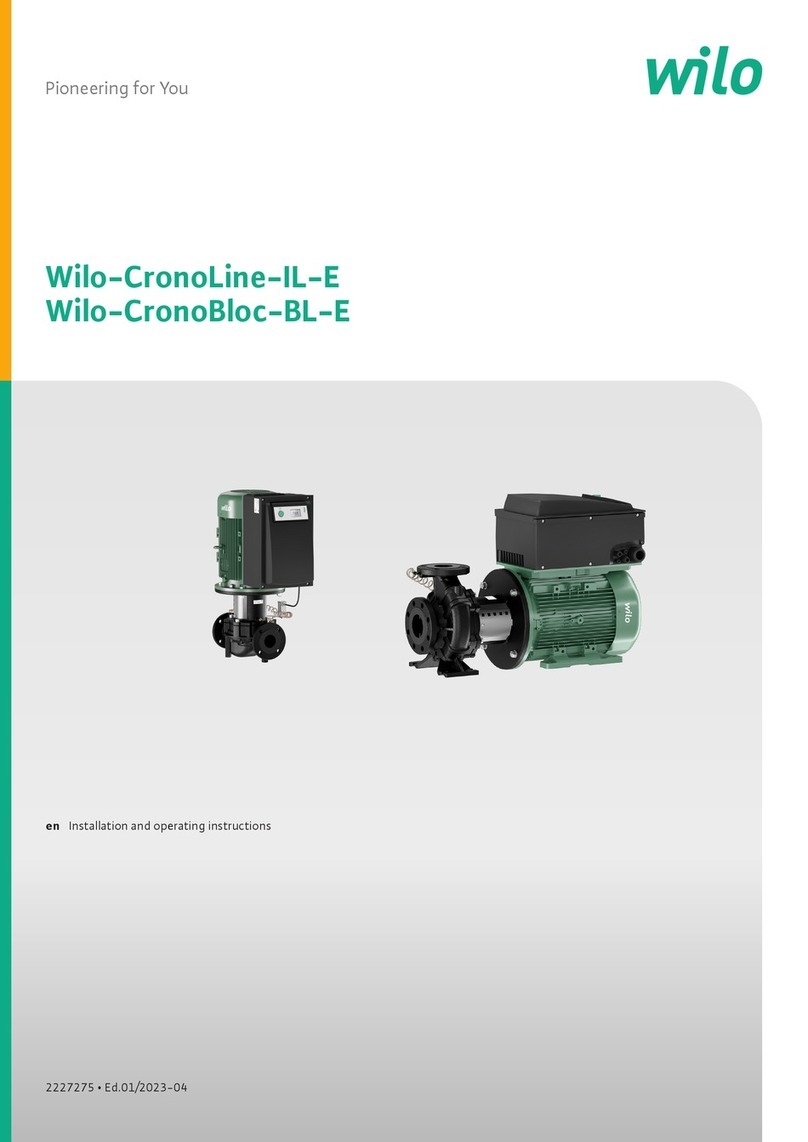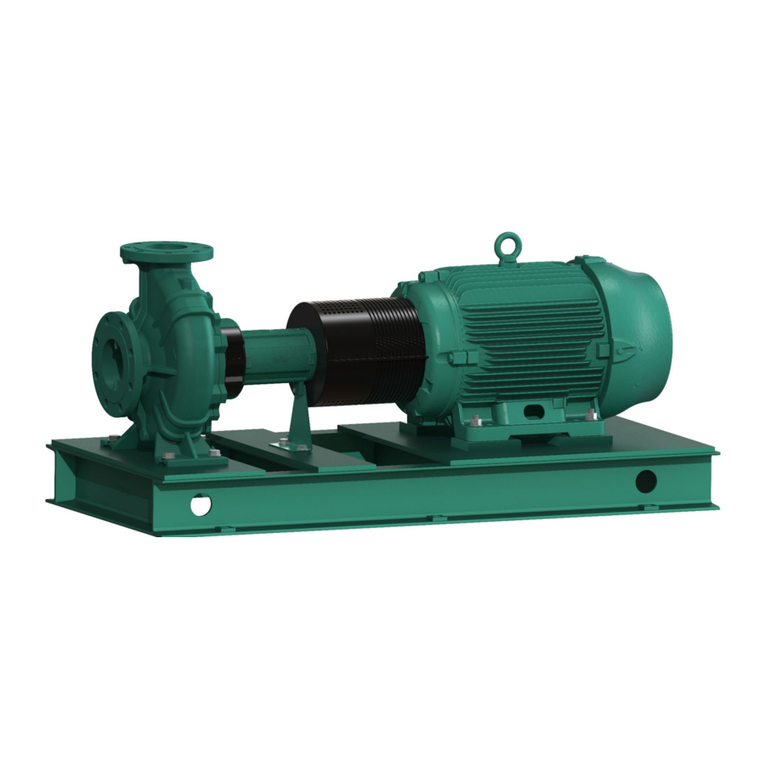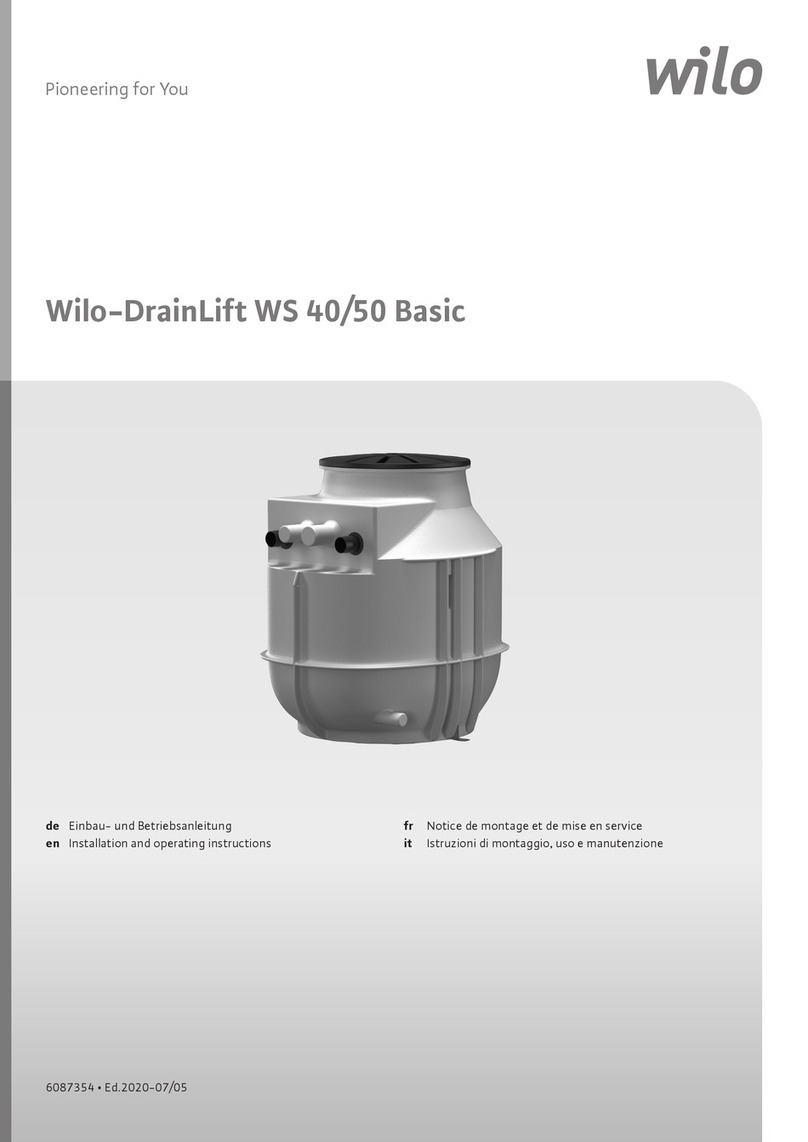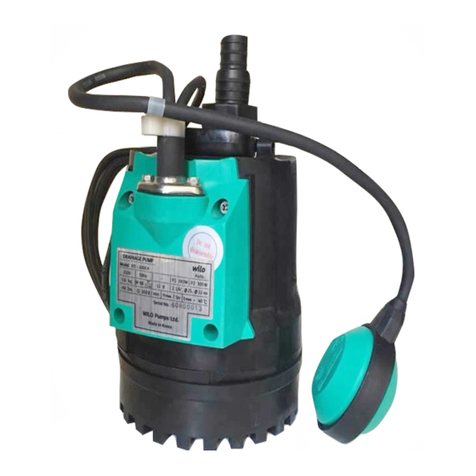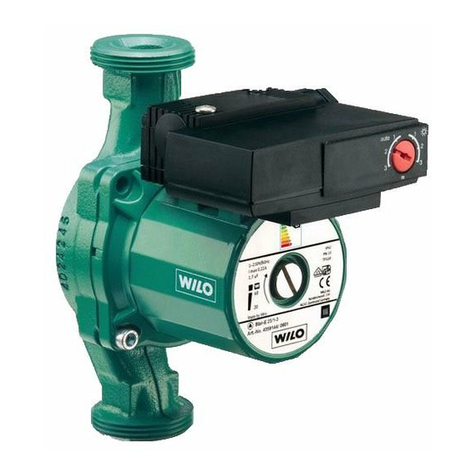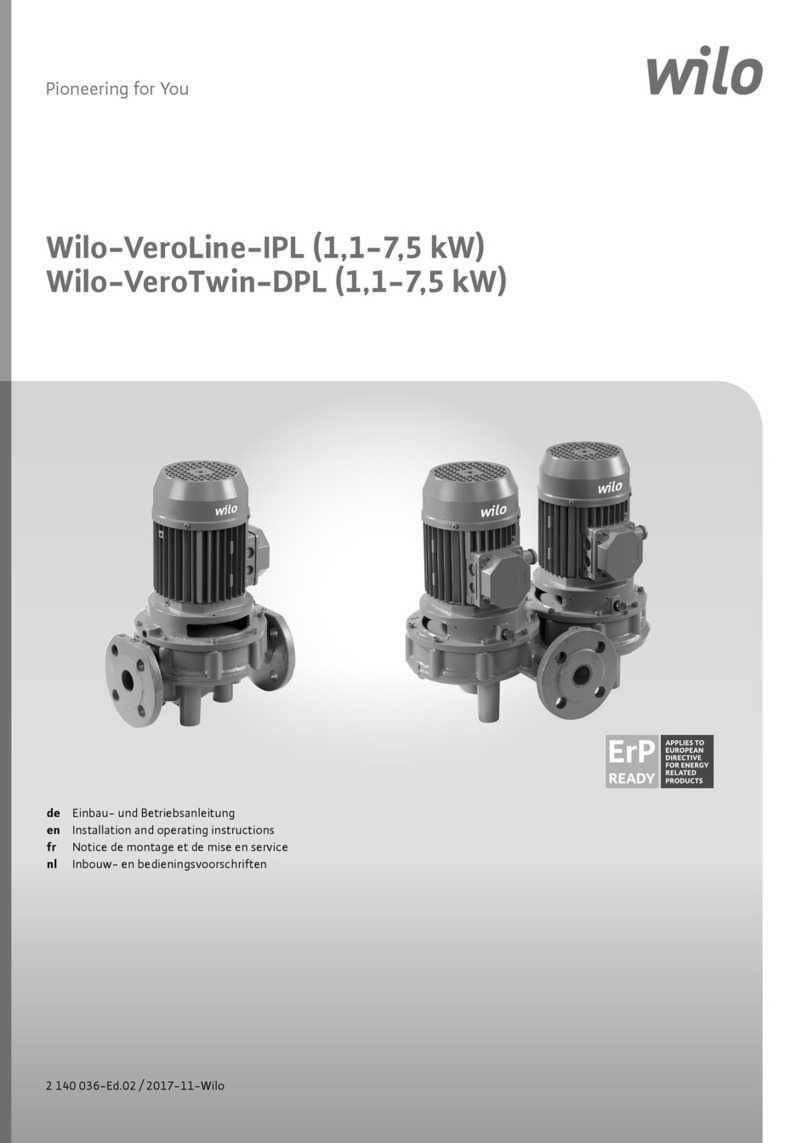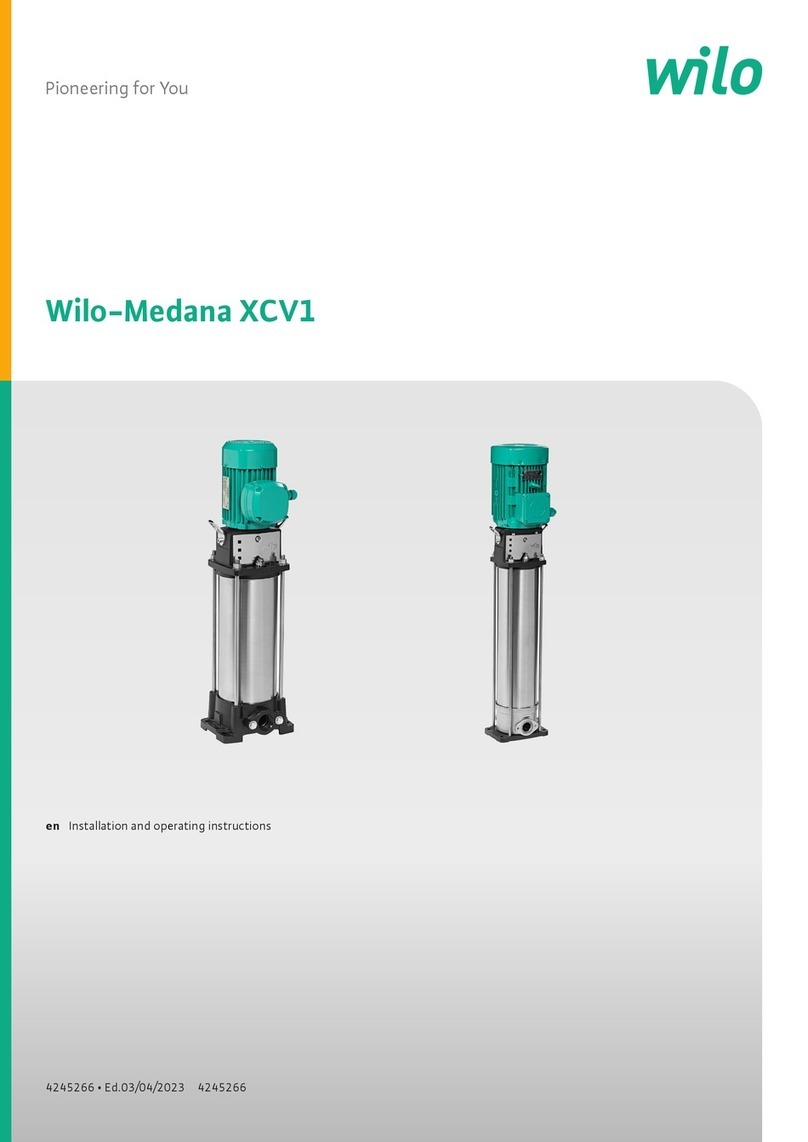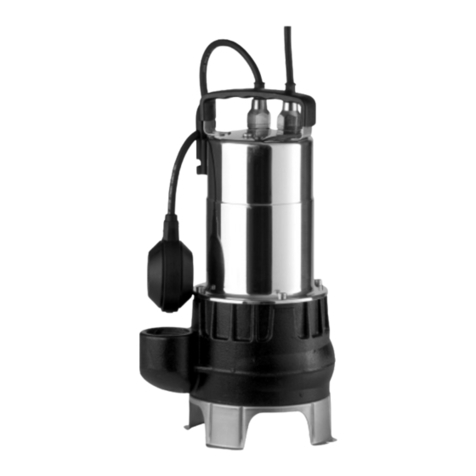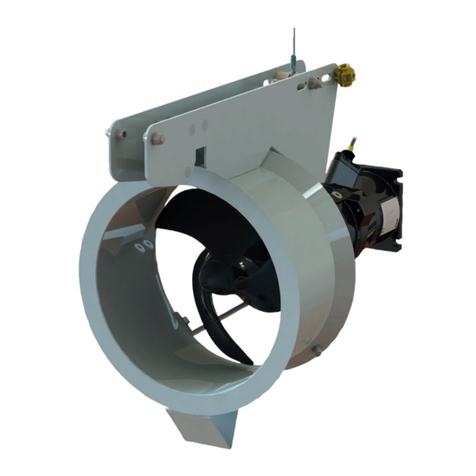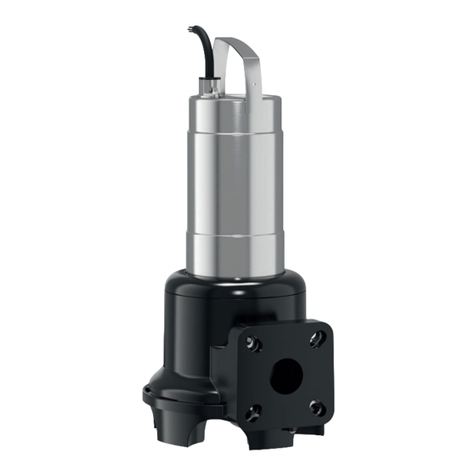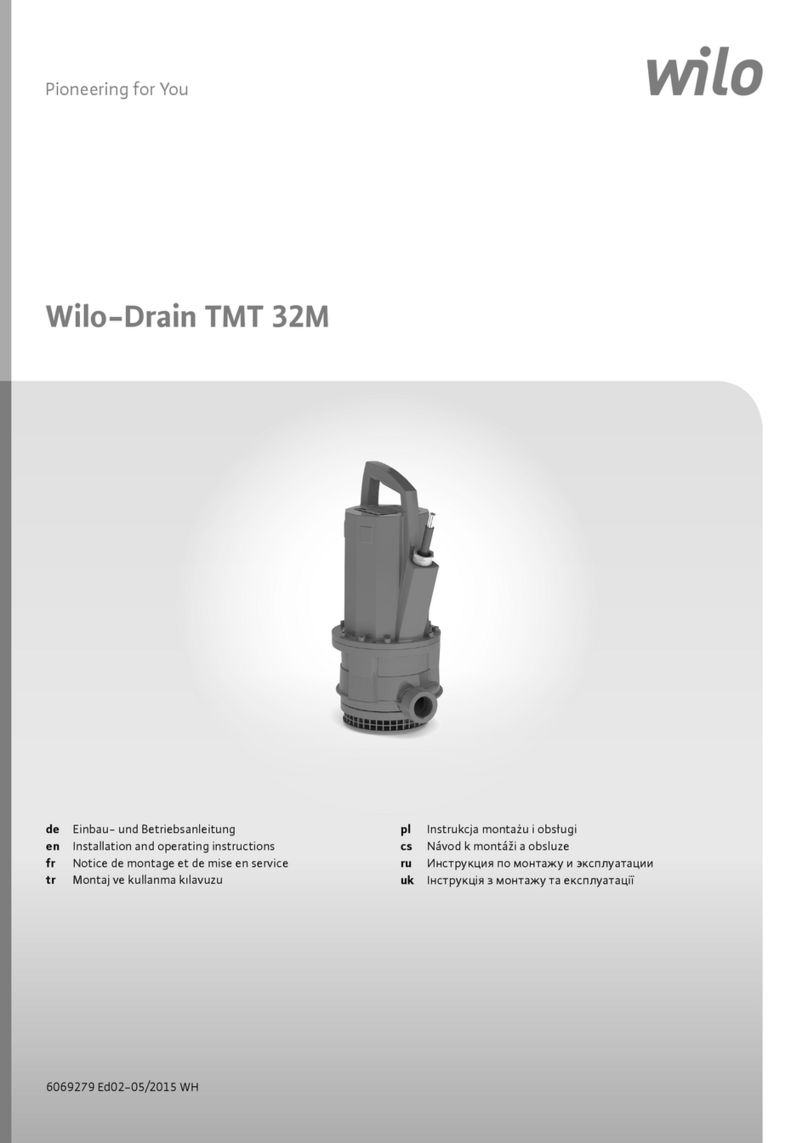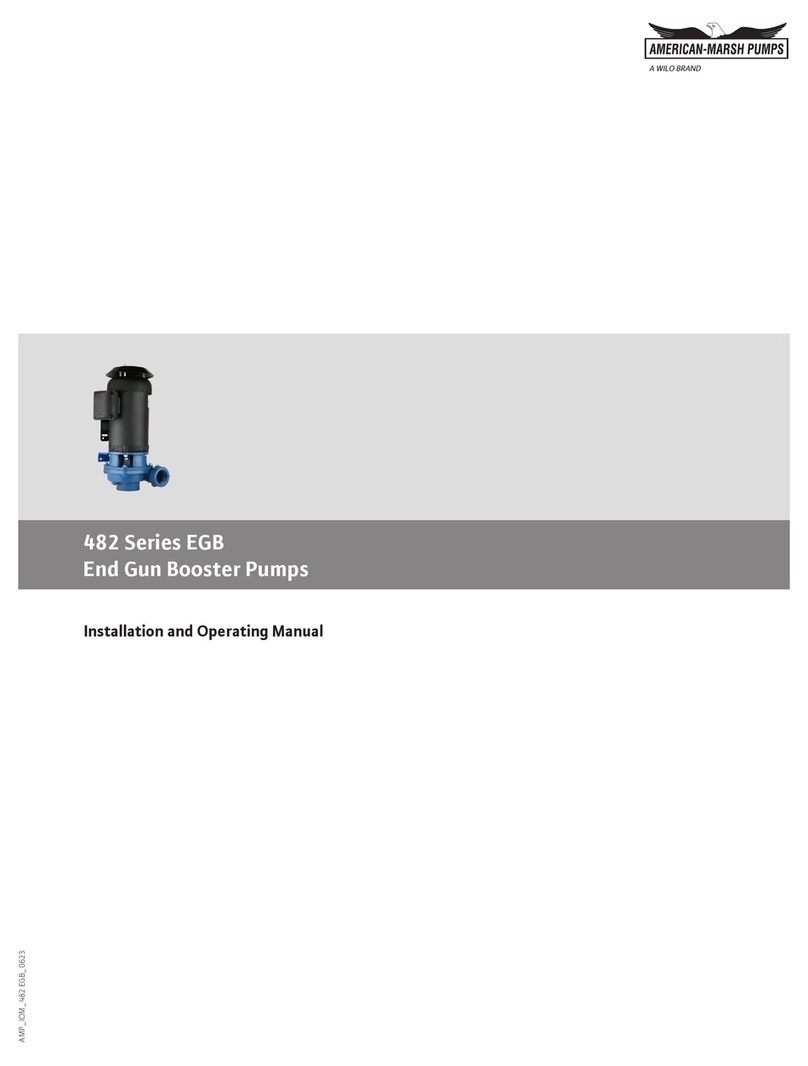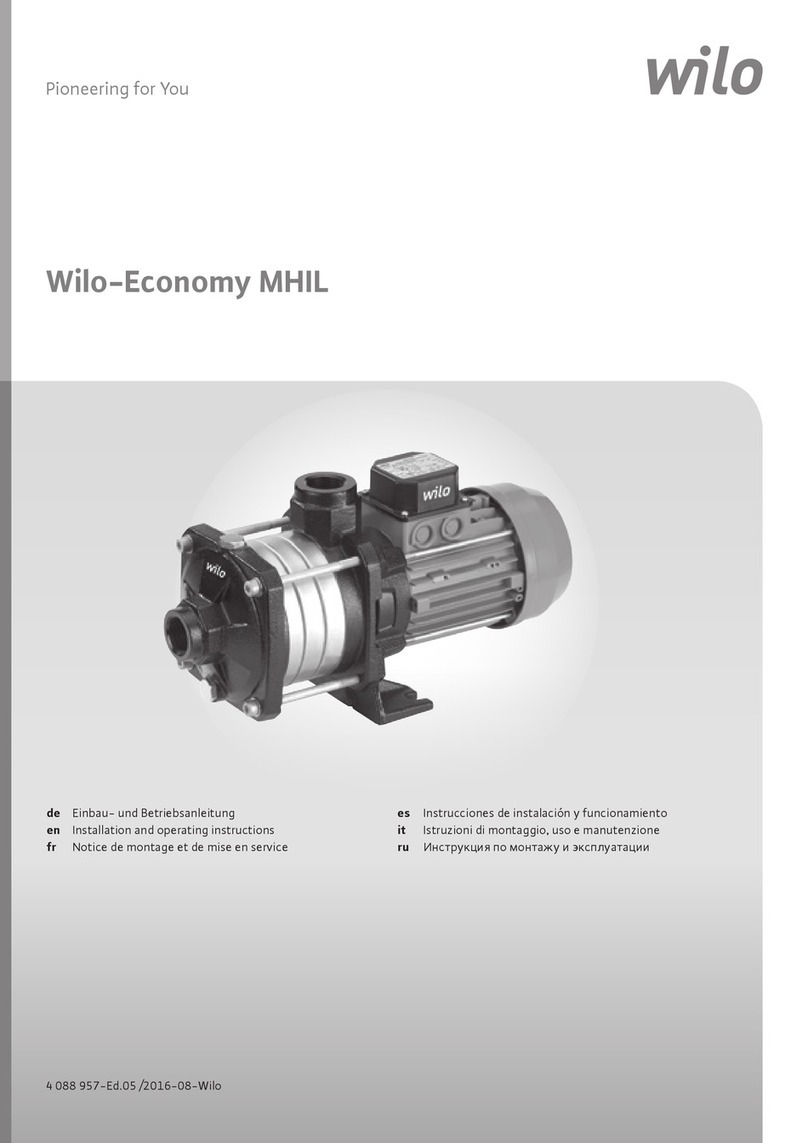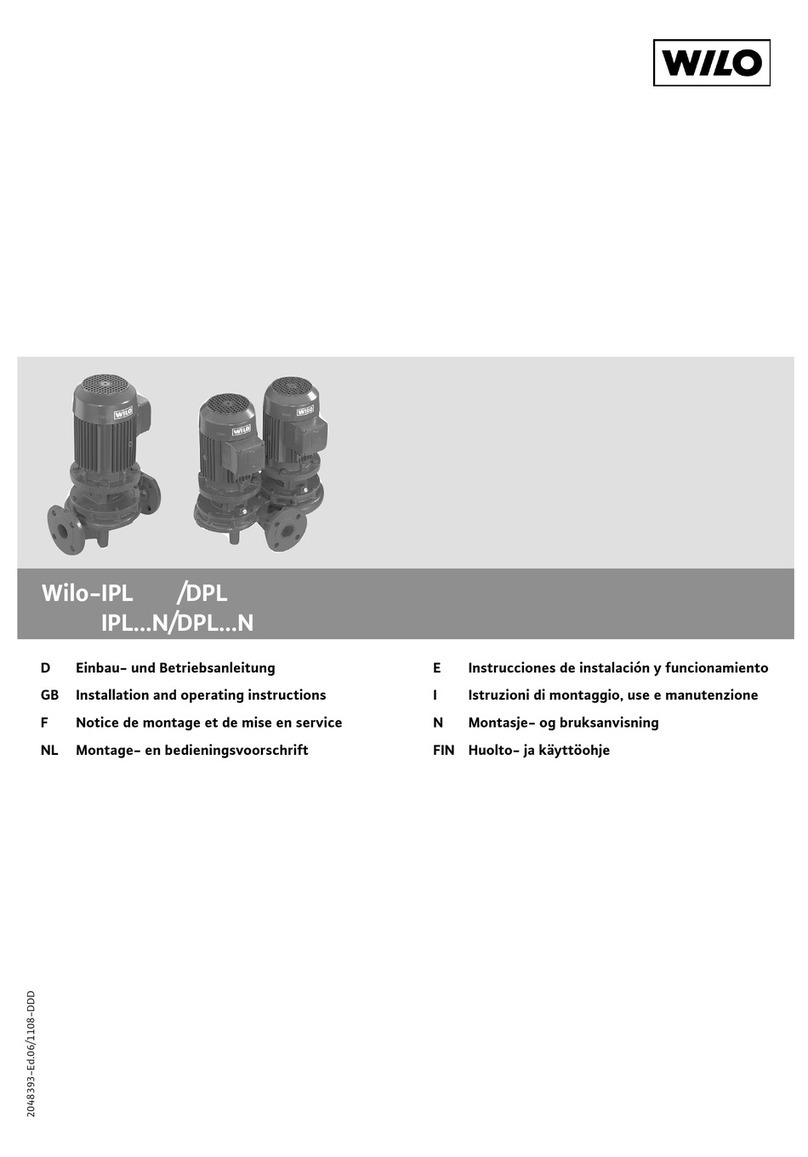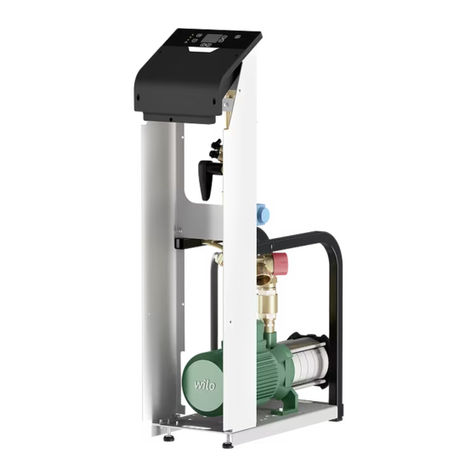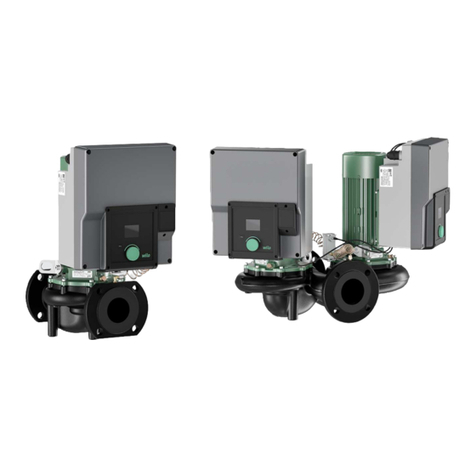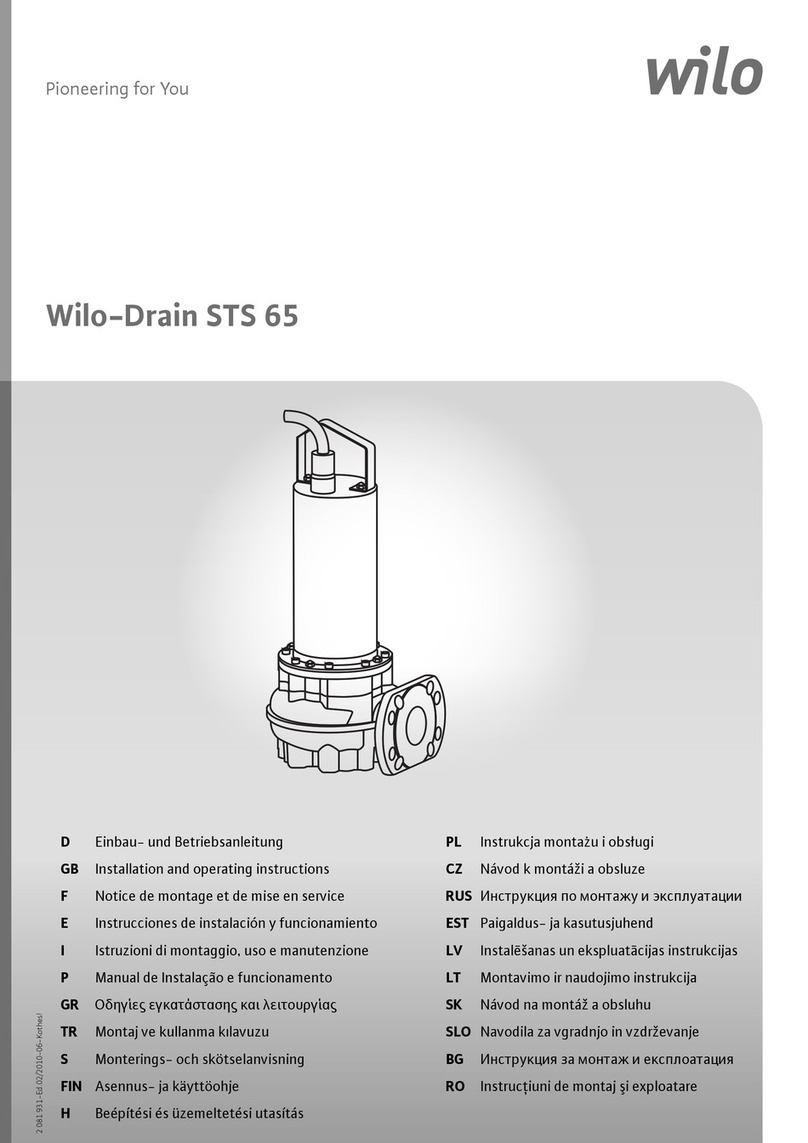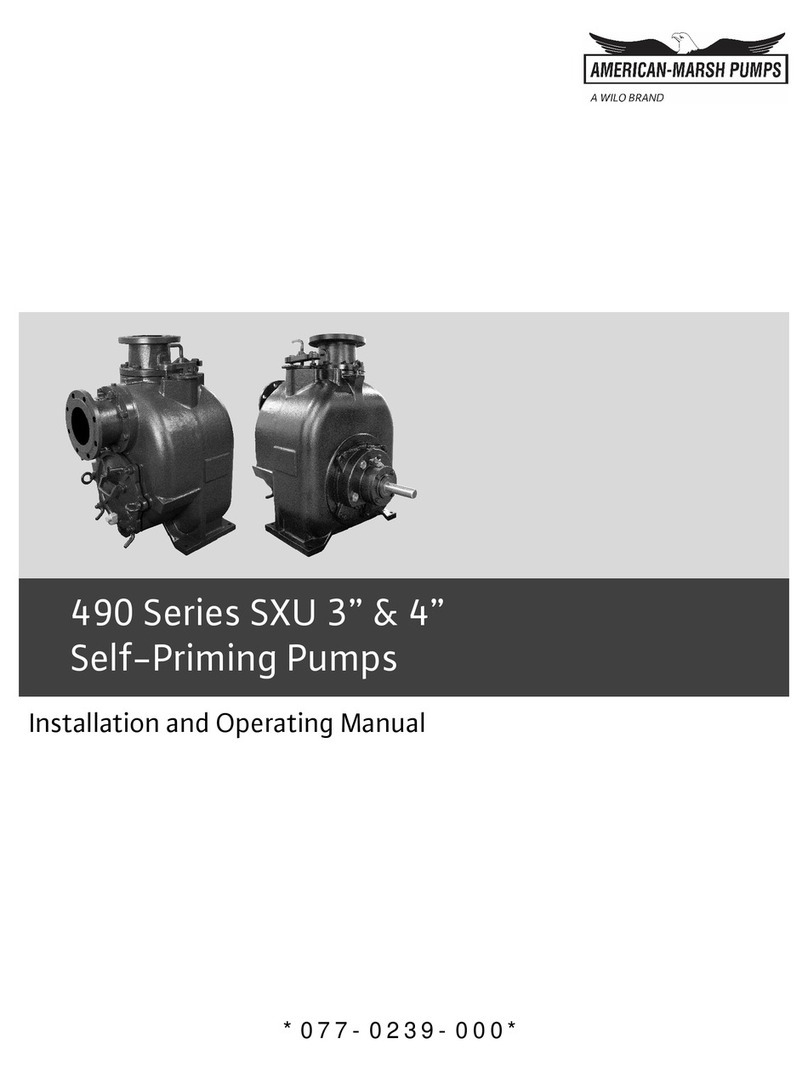
Safety en
Installation and operating instructions Wilo-Padus UNI 7
differential triggering and anti-reactivation device in accordance
with the local regulations. In case of sensitive mains, make provi-
sion for the installation on-site of other protective equipment
(e.g. overvoltage, undervoltage or phase failure relay, etc.).
Residual-current device (RCD)
Comply with the regulations of the local energy supply company!
The use of a residual-current device is recommended.
If persons come into contact with the device and conductive flu-
ids, secure the connection with a residual-current device (RCD).
2.5 Use in fluids hazardous to health
There is a danger of bacterial infection when using the device in
fluids hazardous to health! Thoroughly clean and disinfect the
device after dismantling and prior to further use. The operator
must ensure the following:
ƒThe following protective equipment is provided and worn when
cleaning the device:
–Closed safety goggles
–Breathing mask
–Protective gloves
ƒAll persons are informed about the fluid, the associated danger
and its correct handling!
2.6 Transport
ƒThe following protective equipment must be worn:
–Safety shoes
–Safety helmet (when using lifting equipment)
ƒAlways hold the handle to transport the device. Never pull the
power supply cable!
ƒOnly use legally specified and approved lifting gear.
ƒSelect the lifting gear based on the existing conditions
(weather, attachment point, load, etc.).
ƒAlways attach the lifting gear to the attachment points (handle
or lifting eyelet).
ƒThe stability of the lifting equipment must be ensured during
operation.
ƒWhen using lifting equipment, a second person must be
present to coordinate the procedure if required (e.g. if the op-
erator’s field of vision is blocked).
ƒPersons are not permitted to stand beneath suspended loads.
Do not carry suspended loads over workplaces where people
are present.
2.7 Installing/dismantling
ƒWear the following protective equipment:
–Safety shoes
–Safety gloves for protection against cuts
–Safety helmet (when using lifting equipment)
ƒLocally applicable laws and regulations for work safety and ac-
cident prevention must be complied with.
ƒDisconnect the device from the mains and secure it against be-
ing switched on again without authorisation.
ƒAll rotating parts must be at a standstill.
ƒProvide adequate aeration in closed rooms.
ƒWhen working in chambers and closed spaces, a second person
must be present for safety reasons.
ƒTake immediate countermeasures if there is a build-up of toxic
or suffocating gases!
ƒClean the device thoroughly. Disinfect devices that are used in
fluids hazardous to health!
ƒMake sure that there is no risk of explosion when carrying out
any type of welding work or work with electrical devices.
2.8 During operation
ƒWear the following protective equipment:
–Safety shoes
–Ear protection (in accordance with the notice of the work
regulations)
ƒWork area of the device is not a recreational area. No persons
are allowed in the work area during operation.
ƒThe operator must immediately report any faults or irregularit-
ies to their line manager.
ƒIf safety-endangering defects occur, the operator must imme-
diately deactivate the device:
–Malfunction of the safety and monitoring device
–Damage to the housing parts
–Damage to the electrical equipment
ƒNever reach into the suction port. The rotating parts can crush
and sever limbs.
ƒIf the motor emerges during operation, the motor housing can
heat up to above 40°C (104°F).
ƒOpen all gate valves in the piping on the suction and pressure
side.
ƒEnsure minimum water submersion through dry-running pro-
tection.
ƒUnder normal operating conditions, the sound pressure level of
the device is below 85dB(A). However, the actual sound-pres-
sure level depends on several factors:
–Installation depth
–Installation
–Fixation of accessories and pipe
–Duty point
–Immersion depth
ƒIf the device is operated under normal operating conditions,
the operator must measure the sound pressure. Ear protection
